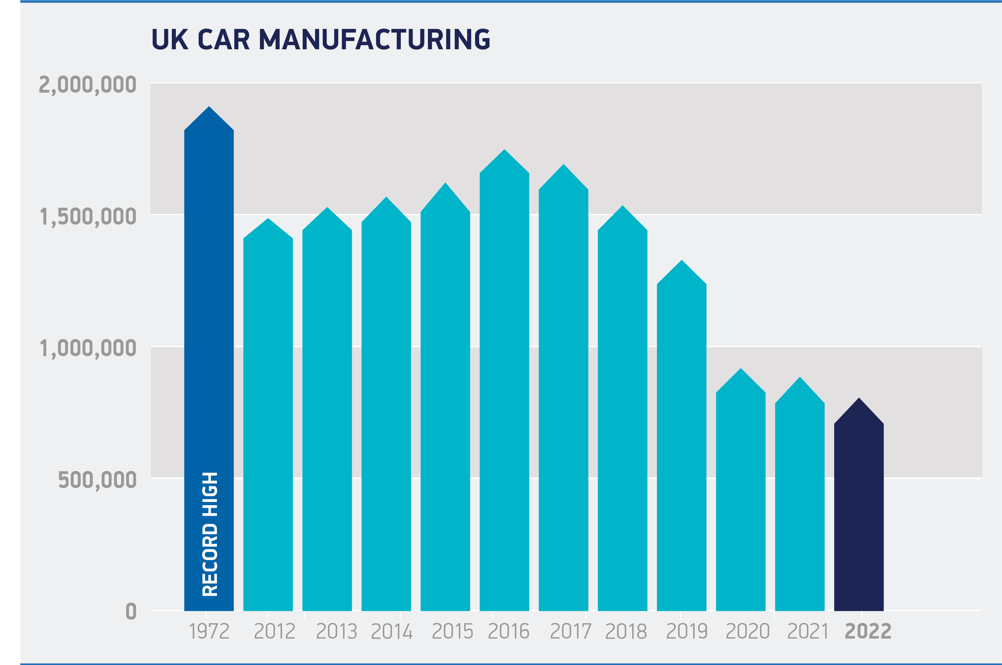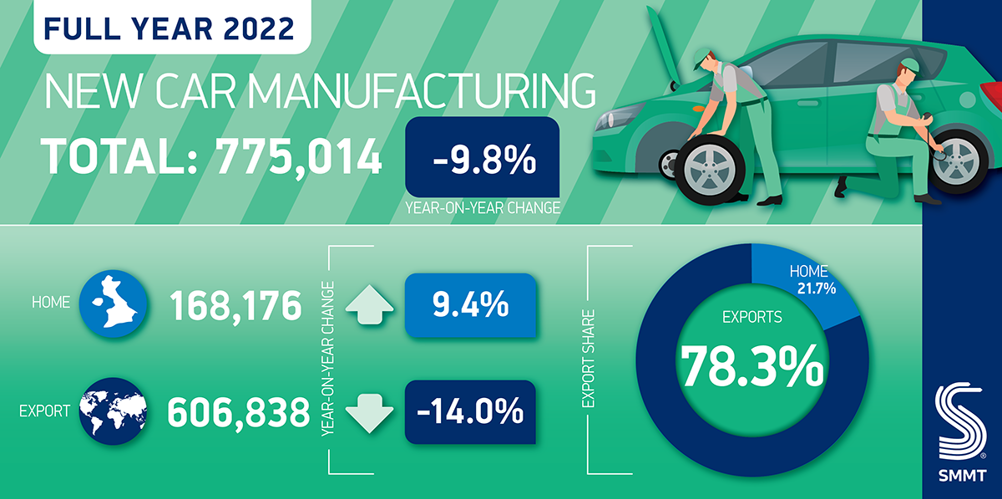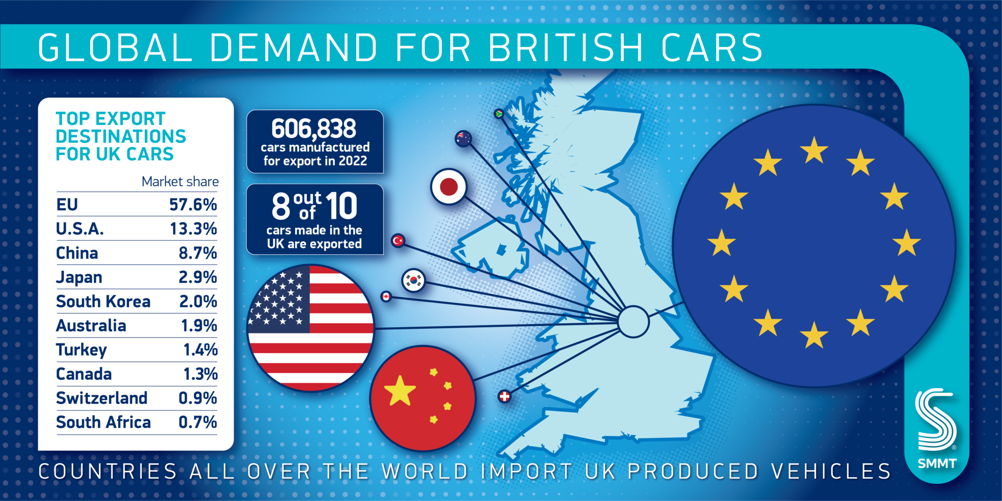
Published by the Society of Motor Manufacturers and Traders (SMMT), the roundup for 2022 highlights a total production of 775,014 units, down 9.8 per cent on 2021’s numbers. The SMMT attributes the decline to the global shortage of semiconductors, as well as structural upheaval such as the closure of Honda’s Swindon plant and a huge dropoff in production at Vauxhall’s Ellesmere Port facility, where output fell by 70 per cent.
More on automotive
With nearly eight in ten vehicles (78 per cent) leaving UK shores, strong domestic sales (up 9.4 per cent) were not enough to offset a 14 per cent fall in exports. Total output for the industry is now down over 40 per cent on the pre-pandemic, 2019 figure of 1.3m cars, a volume loss of more than half a million vehicles.

Despite the doom and gloom, there is cause for some hope. UK automotive turned out a record 234,066 battery electric (BEV), plug-in hybrid (PHEV) and hybrid (HEV) electric vehicles, with combined volumes up 4.5 per cent year-on-year to represent almost a third (30.2 per cent) of all car production. According to the SMMT, the value of BEV, PHEV and HEV exports has risen seven-fold since 2017 - from £1.3bn to over £10bn – with electrified vehicles now making up 44.7 per cent of all UK car exports.
“These figures reflect just how tough 2022 was for UK car manufacturing, though we still made more electric vehicles than ever before – high value, cutting edge models, in demand around the world,” said Mike Hawes, SMMT chief executive. “The potential for this sector to deliver economic growth by building more of these zero emission models is self-evident, however, we must make the right decisions now.
Job losses at Britishvolt as battery maker enters administration
“This means shaping a strategy to drive rapid upscaling of UK battery production and the shift to electric vehicles based on the UK automotive sector’s fundamental strengths – a highly skilled and flexible workforce, engineering excellence, technical innovation and productivity levels that are amongst the best in Europe.”

The EU remains by far the biggest overseas market, absorbing 57.6 per cent of the UK’s export output, even as shipments fell by 10 per cent. Exports to the US (-31.6 per cent) and China (-8.3 per cent) also fell, while the number of cars sent to Japan (+5.7 per cent), South Korea (+32.8 per cent), Australia (+4.7 per cent), Switzerland (+2.7 per cent) and South Africa (+23.0 per cent) all increased, although together these represented just 8.4 per cent of exports. Sales to Russia - a top 10 market in 2021 - fell by 78.3 per cent, with shipments stopped following the outbreak of the war in Ukraine.
With the semiconductor shortage expected to ease, total UK output is predicted to increase 15 per cent in 2023, with production levels set to surpass the 1 million mark again in 2025.










Guest blog: exploring opportunities for hydrogen combustion engines
"We wouldn't need to pillage the environment for the rare metals for batteries, magnets, or catalisers". Batteries don't use rare...